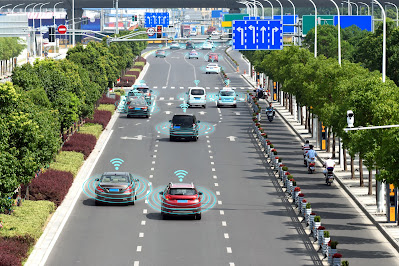We've said it before and we'll say it again, the automotive industry is one that has an ever-changing technological landscape. Each year there are a slew of new advancements that take vehicles to a new place for drivers everywhere. Different engineering choices, more fuel-efficient engines, and convenience feature packages are just a few of the things that we've seen coming out of the automotive industry year after year. With vehicles so technologically advanced now, where are we going to go from here?
While we can't predict the future, we at Toyota of Orlando have an idea for the answer to that question. One of the hottest topics when it comes to the automotive industry is the introduction and future use of self-driving vehicle technology. Cars, throughout their history, have needed input from people to function but automation could change all that as the technology continues to develop. If you're interested in this new and rapidly advancing vehicle technology or you feel like your time behind the wheel could be better spent, Toyota of Orlando is here with the facts on how self-driving vehicles work!
The Ins and Outs of Self-Driving Vehicles
Vehicle automation has been a hot topic of the industry for several years now, especially considering the rapid advancements and pursuit of the technology by vehicle manufacturers like Tesla. But, vehicle automation and self driving has a fairly long history beginning in the 1920s. While most of those efforts were research and hypothetical based, the first landmark self-driving Orlando Toyota vehicle was developed in 1977 in Japan by Tsukuba Mechanical Engineering Laboratory. Even companies like Google have invested in the creation of software that can automatically pilot vehicles without the need for input from a human driver.
The interest in self-piloting Orlando Toyota vehicles is palpable, but you might be wondering how exactly a driving system like that works. Here are the details:
- Self-driving vehicles use a combination of external sensory cameras and GPS navigation to map roads they drive on. They also use this technology to visualize and map nearby environments in three-dimensionally.
- After the Orlando vehicle has mapped its environment, the images are then filtered to reduce noise and then augmented. The resulting images are then processed using a control system.
- Control systems for self-driving vehicles use a deliberative architecture that allows them to make machine-learned and intelligent decisions based on the images being processed.
- This happens through the maintenance of an internal map and using that map to determine the optimal path that avoids obstacles.
- Once a path is determined, the vehicle then sends the information to actuators (devices that control steering, braking, and acceleration) via commands.
- This Orlando self-driving vehicle process is done several times a second over the course of the commute to then drive the vehicle to the destination.
Obviously, the process of using self-driving vehicle technology is pretty complicated. It gets even more fun when diving into how your ride is able to distinguish objects in the environment using algorithms and how fine tuned sensors and cameras. must be to be effective in avoiding obstacles and planning paths.
The technology to create a self-driving vehicle is definitely complicated, but there's still much work to be done when it comes to putting one on the road for consumers to use on a larger scale. For now, many vehicles are equipped with advanced safety features that can anticipate accidents and correct driver error to create safer commutes. In fact, the new Toyotas on our lot here at Toyota of Orlando are equipped with this technology! If you're interested in getting behind the wheel, swing by our dealership at 3575 Vineland Road today!


No comments:
Post a Comment
Note: Only a member of this blog may post a comment.